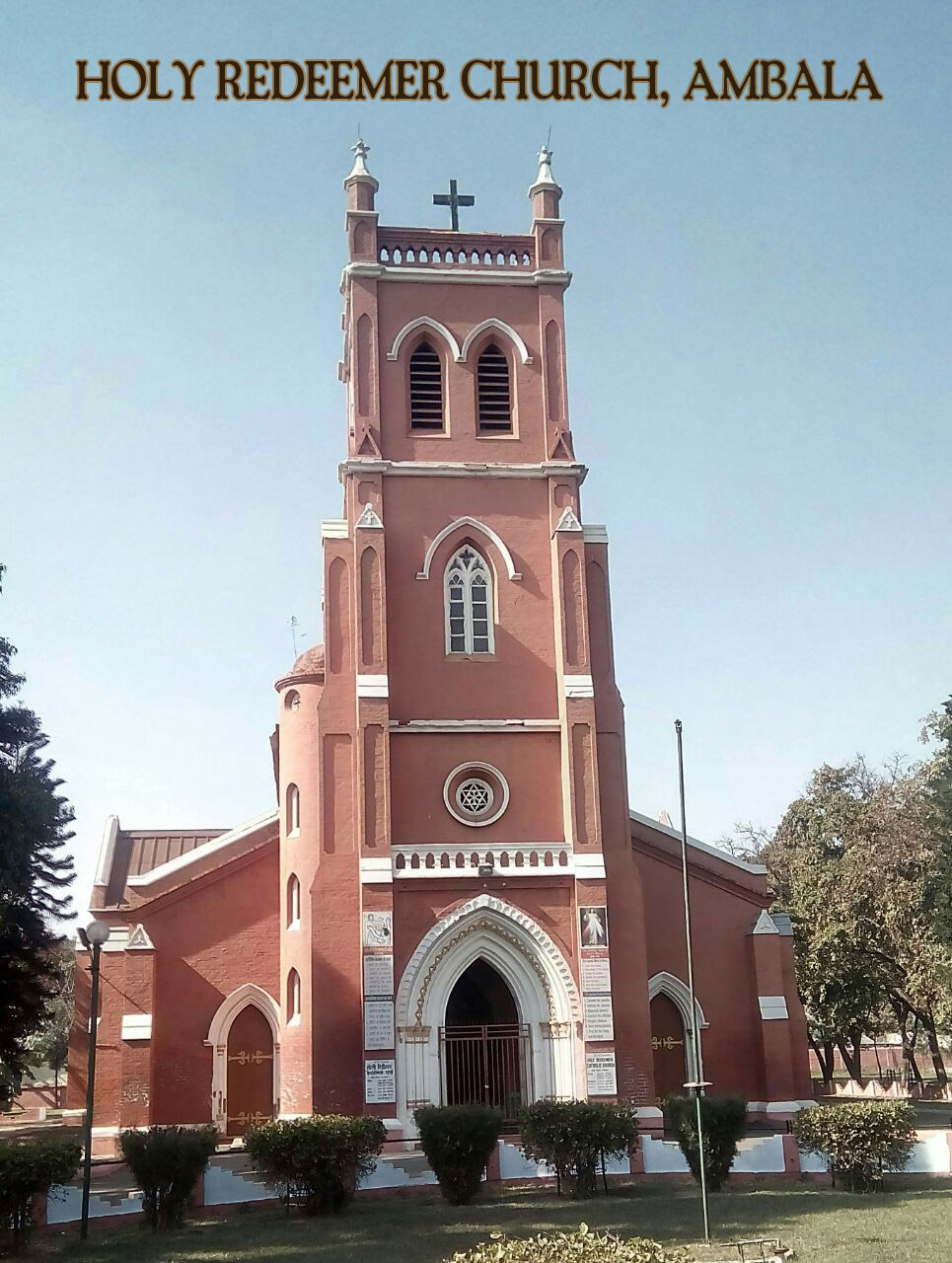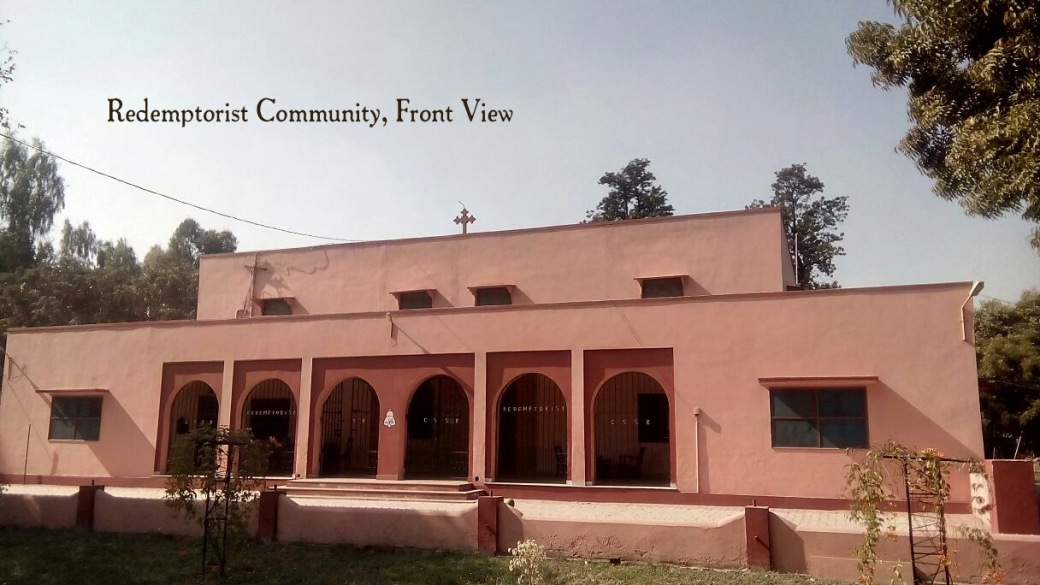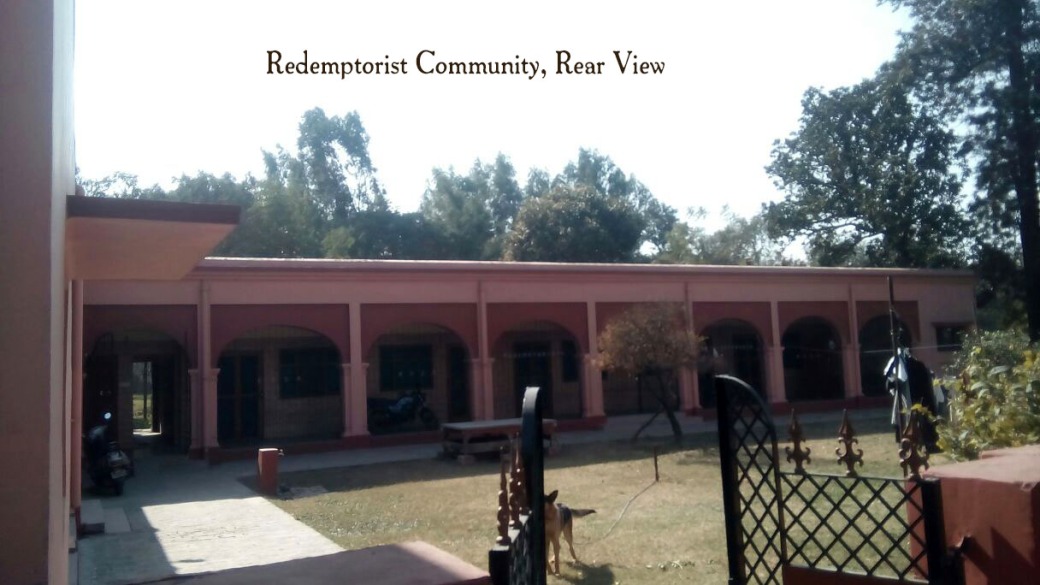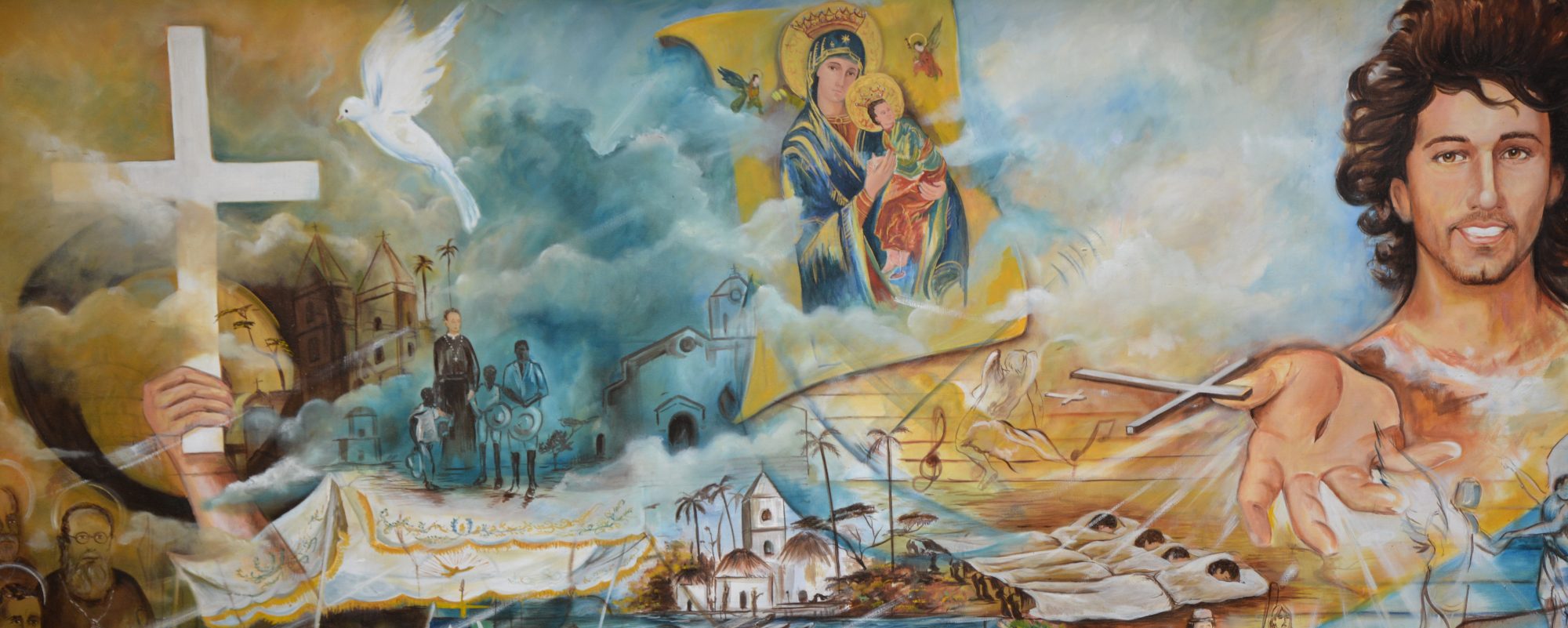History of the Holy Redeemer Church, Ambala Cantt., Haryana, India

The Military Station of Ambala Cantt., was first opened in 1843. Before that, the Frontier Station in North India was at Karnal, which proved to be malarious and the British troops were moved to Ambala.
From 1843 to 1848, an Italian Capuchin Fr. Venance served the Catholics in Ambala, from Delhi. He built the first church of the “Holy Redeemer” in 1848. At the same time the first priest’s residence was also built at the extreme end of the compound. The vicar Apostolic of Agra, Msgr. Ignatius Persico, who later became a Cardinal, administered confirmation in Ambala on March 12th 1860. In 1885 the number of Catholics in Ambala was given as 340 Europeans and 20 Indians. About this same time a soldiers’ club, consisting of two separate rooms were built to the North of the Church near the road. This club later collapsed. Lord Ripon, the only Catholic Viceroy of India (1880-1884) visited Ambala Cantt., on his way from Calcutta to Shimla, accompanied by his chaplain, Fr. Henry Ker, S.J.
In 1890 the priest’s residence was burned down and the present house was built in the centre of the compound. After this Ambala got its first resident priest in the person of Fr. Agnellus. In 1895 Fr. Fedelis, born at Amritsar in 1864, was appointed military chaplain in Ambala. He began an Urdu elementary school, and employed a Munsi to teach.

In 1902 began the building of the new church. The priest-in-charge was Fr. Peter Mary, who collected money to build the church. It had a marble Sanctuary with communion rails, three beautiful marble altars, a huge pipe organ and three big bells. The old Church, which was more like a barn was pulled down. To the North of the present Church can be seen a memorial stone, railed round, marking the side of the high altar of the old Church. On 12th November 1905 the new Church of the Holy Redeemer was solemnly blessed by Archbishop Gentili. It can seat 800 people and with its huge tower, solid pillars and high gothic roof, it is to this day one of the largest and most beautiful churches in the whole of North India.
Until then Ambala was being served by the Italian Capuchins of the Agra archdiocese. In 1911 was created the Archdiocese of Shimla which was handed over to the English Capuchins. That same year three priests were assigned to Ambala – Fathers Benedict, Pascal and Bernard. On the 2nd Feb. 1912 the first Archbishop of Shimla, Mgs. Kenealy, was vested with the pallium in Ambala Church, in the presence of a large number of clergy and faithful. For many years Ambala served as the winter residence of the Archbishop.

The priest who spent the longest time in Ambala was Father Anthony Douglas, a Capuchin born in India. His signature is seen in the Baptism Register from June 1911 to 1939. In March 1921 he was sent to Sirsa for a few months to reopen the mission station there. Father Alban Swarbrick, a later bishop of Jalandhar, was appointed military chaplain in Ambala. But in September of the same year, Fr. Alban was transferred to Sirsa and Fr. Anthony returned to Ambala. Fr. Anthony built the grotto of our Lady near the Church and also put in the stained glass window behind the altar and a marble pavement along the centre of the church. In 1923, two Tyrolese Capuchins, Frs. John Mary and Isaiah, who had been missionaries in Bettiah before 1914, went to start a mission in Lallru, 25 K.m. from Ambala, but were unsuccessful.
After 1939 the following priests were Chaplains in Ambala: 1939 – 1944 Fr. Basil Scotheran; 1944 – 1947 Fr. Sylvester Walsh; 1947 – 1949 Fr. Adrian McLaughlin and Sylvester Menezes, 1949-1951 Father Jerome Puthottam, 1951-52 Fr. Finbarr, 1953-56 Fr. Anselm. All these priests whether English or Indian belonging to the Capuchin Order. Between 1953 and 1956 a few diocesan priests also served in Ambala. Their names are Frs. Xavier, Lawrence Pinto, Christanand and Fr. I dos Santos. There is a plaque at the back of the church commemorating the golden jubilee on 11th November 1955. Frs. Anselm and I. dos Santos are mentioned as the priests-in-charge of the parish.
In April 1956, the parish of Ambala was handed over to the Redemptorist Congregation. The First Redemptorist parish priest was Fr. Bernard Pereira who later became the first Indian provincial. Fr. J. C. Morgan R.I.P. (1962-1966) Fr. E. Cleary R.I.P. (1966-1969), Fr. E. Paikeday, (1969-1972), Fr. E.L. Braganza R.I.P. (1972-1974), Fr. Konrad D’Souza R.I.P. (1974-1977), Fr. Osmond D’souza, Fr. C. Sanjivi, Fr. Gerard Campos, Fr. E. Lobo R.I.P. and Fr. F. Menezes were the co-parish priests who worked during all these years. Fr. Dominic Braganza R.I.P., Fr. Konrad, Frs. Francis Ezhanikkat, Arul Manohar, Fr. Roman Kanade and Fr. Valentine Kandulna were the parish priests. And the present parish priest is Fr. Francis Ezhanikkat.
The area up to Karnal and Panipat on the Delhi route and Kalka and Chandigarh on the Shimla side were part of the parish. Nahan and jagadhri were looked after from Ambala. In 1958 the Habidi mission was opened. In 1964, the Lalroo Mission was opened. Fr. Henry Lewis the present Parish Priest of Shimla stayed for some time in Ambala from where he with Fr. Konrad began his missionary work in Bhurewala, Kesri and Panjil. In 1991 the Mother of Perpetual Help Church was build and blessed by his Excellency Rt. Rev. Gilbert B. Rego. Sr. Mala R.J.M., Sr. Margaret (Magi R.J.M) and Sr. Caludine were also staying together in the Church till the convent was built. Now Bhurewala is a full-fledged parish with a high school and hostel for the girls. Three cheers to these pioneers.
Ambala was the centre for retreats of the clergy till 1972 when the bishop’s house at Chandigarh, was built. The present strength of the parish is 260 families and about 300 men in the barracks in both the Army and Air Force. Most of the parishioners are from the military and there is only a small local population with 40 families.
The Redemptorists: The Redemptorist fathers were first in Dagshai but were asked to take over Ambala in April 1956. The Redemptorists are an International Congregation founded by St. Alphonsus in the year 1732 precisely for the care of the most abandoned. The Indian head quarter is at Bangalore. They established a monastery at Ambala and then a parish house. The building was extended to accommodate the fathers and brothers who went out as far as Calcutta in the east and Pakistan in the Northwest, and Rajasthan, Madhya Pradesh, Odisha, Jharkhand etc. The Fathers went out always for missions in parishes, orientation programmes in schools and colleges and retreats for priests and religious groups.
Perpetual Help Society: The Primary School Hindi Medium was started in 1961 for the under privileged students of the society. The Redemptorist fathers run it. Always there were at least 100 students in the school from class I – IV. In 1965, a society was founded and registered for their benefit especially for the poor rural areas. The Charitable work was done mainly to take care of the children of the rickshaw pullers and housemaids. The society maintains the Holy Redeemer Charitable School. The Children who passed standard IV were given admission in the neighbouring schools, namely Sikh Kanya girl’s school and Khalsa boy’s school. Many students had been given books and uniforms by the society.
Jesus and Mary Convent School: the S.C.J.M. sisters were invited by the parish priest, as there was great need of education for the children of the armed forces. In 1908, they began in a small way. They have devoted themselves to the task of education in the tradition of their congregation. For some time, they gave a sister to help in the Hindi Medium primary school run by the parish.
Missionaries of Charity: In 1961, the Redemptorist fathers invited the sisters of Mother Teresa to the parish, as the need for their type of work was great. At first a house was to be constructed in the church compound. The plans were passed by the M. E.O. but Mother Teresa preferred the site at 83, Mansfield road. They had served the poor of the poor faithfully through their slums’ school, sewing classes, care of the sick and old, the church clinic and lepers. They were in close collaborations with the parish and have done invaluable work in the villages around. In 1975, Mother Teresa herself opened a Shishu Bhavan. The citizens of Ambala honoured Mother Teresa when she won the Nobel Prize and received the Bharat Ratna Award. Our Chief Minister was here in person.

